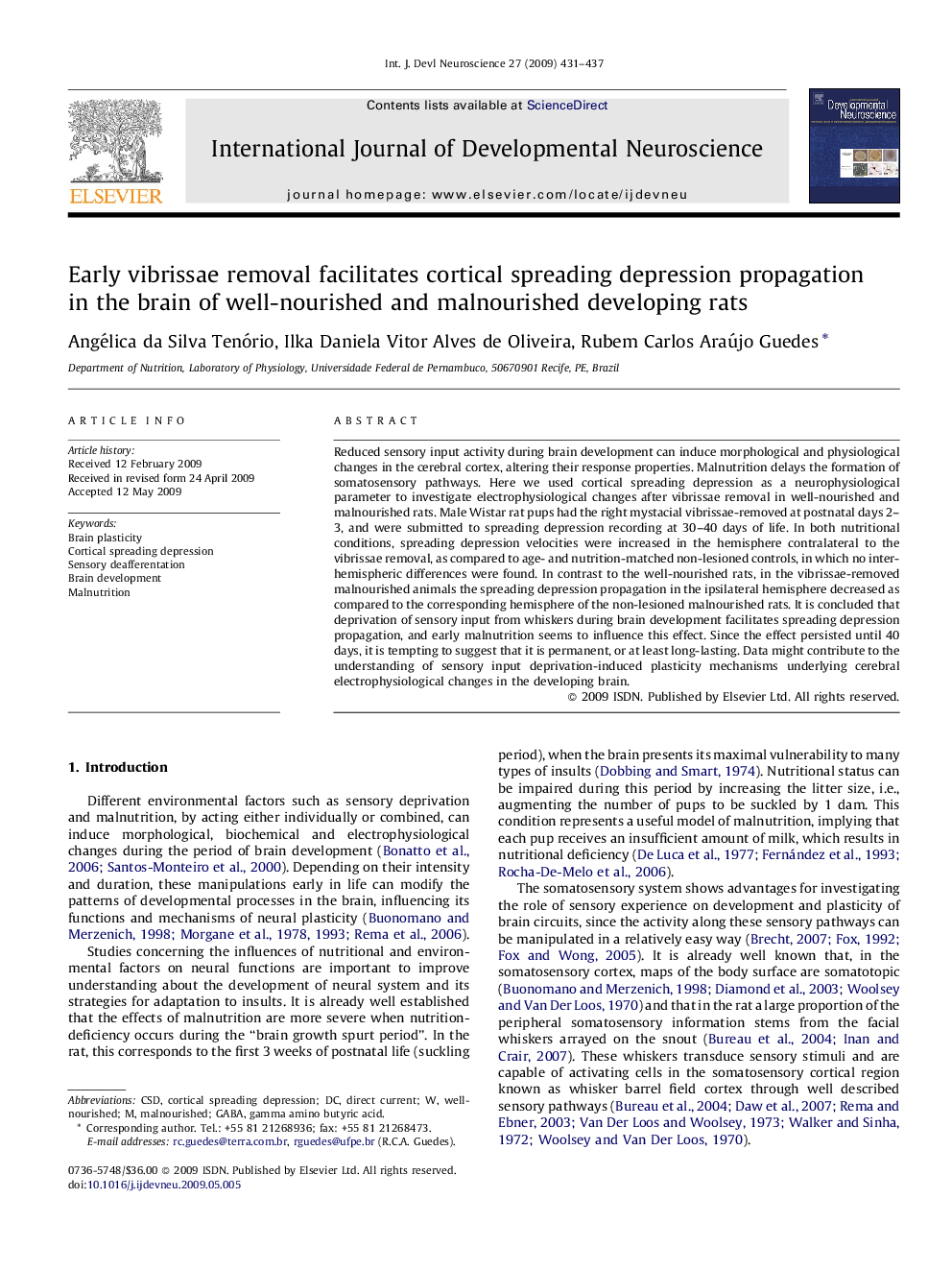| Article ID | Journal | Published Year | Pages | File Type |
|---|---|---|---|---|
| 2786947 | International Journal of Developmental Neuroscience | 2009 | 7 Pages |
Reduced sensory input activity during brain development can induce morphological and physiological changes in the cerebral cortex, altering their response properties. Malnutrition delays the formation of somatosensory pathways. Here we used cortical spreading depression as a neurophysiological parameter to investigate electrophysiological changes after vibrissae removal in well-nourished and malnourished rats. Male Wistar rat pups had the right mystacial vibrissae-removed at postnatal days 2–3, and were submitted to spreading depression recording at 30–40 days of life. In both nutritional conditions, spreading depression velocities were increased in the hemisphere contralateral to the vibrissae removal, as compared to age- and nutrition-matched non-lesioned controls, in which no inter-hemispheric differences were found. In contrast to the well-nourished rats, in the vibrissae-removed malnourished animals the spreading depression propagation in the ipsilateral hemisphere decreased as compared to the corresponding hemisphere of the non-lesioned malnourished rats. It is concluded that deprivation of sensory input from whiskers during brain development facilitates spreading depression propagation, and early malnutrition seems to influence this effect. Since the effect persisted until 40 days, it is tempting to suggest that it is permanent, or at least long-lasting. Data might contribute to the understanding of sensory input deprivation-induced plasticity mechanisms underlying cerebral electrophysiological changes in the developing brain.
